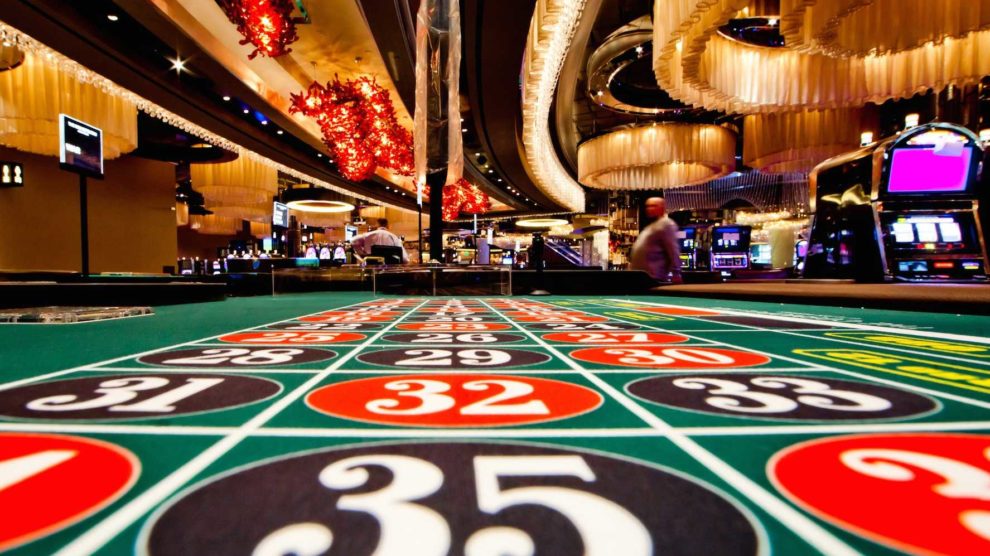
Within the lively and stimulating world of gaming establishments, wherein fortune and tactics intertwine, hues and aesthetic play a key role in attracting gamblers. Nhà Cái Uy Tín From the moment visitors step into a casino or log into a gaming website, they are immersed in a visual feast that grabs their attention and lures them to discover further. Vivid colors, engaging graphics, and creative layouts are meticulously crafted to create an environment of excitement and anticipation, ultimately enhancing the gaming experience.
As gamblers navigate through the ever-changing landscape of casino games, they encounter a range of designs that not only serve aesthetic purposes but also affect emotions and choices. Colors like scarlet and yellow symbolize riches and luck, while soothing navy and emeralds can create a much relaxed environment. Grasping how these elements work together enables casinos to create an welcoming and energizing atmosphere that encourages players to interact with the games, invest additional time at the tables, and increase their overall enjoyment.
The Psychology of Color in Casino Games
Tint plays a crucial role in the development of casino games, shaping players’ emotional states and behaviors. Lively and bold hues, such as scarlet and yellow, are often used to ignite excitement and draw focus. These shades create a feeling immediacy and dynamism, encouraging players to involve themselves more enthusiastically with the experience. By thoughtfully selecting tints, designers aim to elicit feelings of pleasure and excitement, which can enhance the total game experience.
Different colors also have psychological connotations that can influence how players perceive their chances of victory. For example, green is commonly associated with good fortune and abundance, making it a frequent choice in games like the roulette wheel and poker tables. This association can result gamblers to feel more optimistic and confident in their gaming, ultimately encouraging them to stake more. Grasping these connections allows game developers to craft environments that enhance player satisfaction and retention.
In addition, the design of casino game interfaces often uses color gradients and differing colors to direct players’ responses. For case, successful results may be accentuated with vivid, differing hues, creating a visual incentive. This method strengthens positive outcomes and encourages repeated engagement. By utilizing the science of color, gambling establishments can design games that not only attract gamblers but also hold them involved and dedicated in their play experience.
Design Features that Engage Players
The visual appeal of gambling games is largely influenced by the implementation of bold colors. Lively and striking colors are deliberately chosen to create an inviting atmosphere that captures interest. For instance, reds and golden hues often signify luck and prosperity, which is why they are prevalent in the color schemes of slot machines and table surfaces. These colors not only draw players in, but they also evoke emotions related to excitement and expectation, enhancing the overall gaming experience.
In parallel to color, the aesthetic and layout of casino games play a crucial role in captivating players. Games are designed to be intuitive, ensuring that players can quickly understand the guidelines and mechanics. User-friendly interfaces, along with engaging graphics and motion, help maintain gamer interest and promote extended play sessions. The physical elements, such as the texture of the controls and the audio of the games, also add to a comprehensive sensory experience that keeps players engaged.
Finally, thematic elements in gaming design can greatly influence player choice. Many casino games are inspired by popular culture, fairy tales, or adventure themes, featuring symbols and characters that resonate with players. These themes create a sense of immersion and connection, making each game feel distinct. When players feel a connection to the theme, they are more likely to opt for that game over others, leading to increased participation and enthusiasm within the gambling environment.
Case Studies: Effective Casino Slot Designs
One noteworthy example of impressive gambling game design is the well-known slot machine series based around popular movies. Games such as those based on the Wizard of Oz and Game of Thrones utilize bright colors and superior graphics to immerse players in well-known narratives. The use of dynamic visuals and entertaining sound effects grabs the interest of players, establishing an affective connection to the theme. This approach merely encourages longer play but also enhances the overall gaming experience, resulting in increased player retention.
Another effective case is the use of the psychology of color in table games like blackjack and roulette. Casinos often develop these games with rich reds and greens, colors traditionally linked with luck and wealth. For instance, the green felt on a blackjack table provides a relaxing effect, while the crimson accents in the wheel invite anticipation. This deliberate use of color helps to establish an inviting atmosphere that motivates players to engage, satisfying their psychological impulses and increasing their enjoyment.
Finally, social casino games that incorporate community features and lively, lively designs have achieved remarkable success in engaging players. Games like Zynga’s Poker and Slotomania leverage striking colors and playful animations to forge an inviting online environment. The inclusion of leaderboards, community sharing options, and in-game rewards fosters competition and community, pulling players in for longer sessions. Such designs merely make the games visually appealing but also highlight community engagement, a vital factor in player retention and engagement within digital casino environments.
